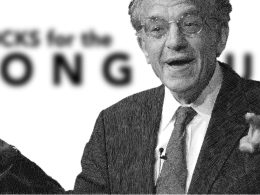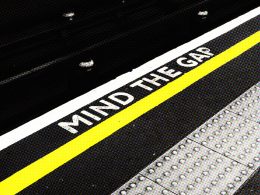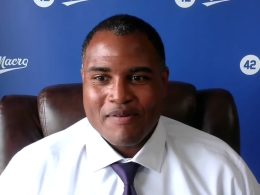by Olivia Barbee, Wells Fargo Asset Management
Learn how company fundamentals and credit research help investors tune out near-term market noise. Portfolio manager Tom Price explains.
Tom Price: We don’t really worry too much about the near-term market environment. What we’re really doing is selecting credits where we think we’re going to get paid back as we expected to when we purchased the bond.
Olivia Barbee: That’s Tom Price, manager of the Wells Fargo Short-Term High Yield Bond Fund. I’m Olivia Barbee, and you are On the Trading Desk. Tom Price joined us recently to discuss how he focuses beyond near-term market noise to take a longer-term view for investors. Yet, Tom is keenly aware of the current market environment and its implications for investors.
Tom: Well, obviously, there are a lot of economic factors at play—unemployment, what’s happening with inflation. Obviously the Fed, it would like to have rates a little bit higher—because rates are so low right now, it’s impacting savers; there’s not much income.
Olivia: Tom explains how the team is positioning for opportunity.
Tom: In short-term high yield, we don’t do a lot depending on the market environment. For us, it’s really about selecting bonds from issuers where we’re comfortable that we’re going to get paid back when we expect to get paid back, and that’s where our credit analysis comes into play. But if you think about it, we’re buying BB and B securities on the shorter end of the maturity curve, and that’s a fairly small universe. We don’t do a lot of things like a lot of fixed-income managers might be with duration and yield curve—things you’ll hear in the investment-grade space—because, really, the high-yield market is driven more by what happens with credit. It’s more attuned to what you might see in the equity market—is the company doing well or not? And so, because we’re short and we buy BB and B, we don’t really reposition the fund much. The one thing we can do is we can increase our exposure to bank loans, which have a floating-rate component. That would be one thing we could do; we are looking to do it, but we are looking for a more attractive entry point before we make an increase in our bank loan allocation. But otherwise, it’s really about picking bonds that we’re comfortable that we’re going to get repaid.
Olivia: One thing you may have picked up on in this program is Tom’s emphasis on credit research in terms of selecting investments—intensive credit research is something truly unique to his approach.
Tom: Intensive credit research is basically looking at the credit and making an assessment of the creditworthiness over your time horizon. And for us, we want to make sure we think there’s good creditworthiness well beyond our time horizon. Because if we make an assessment that this company’s going to pay us back in three years, but we’re worried about it in three years and three months—if we’re off by that much, we can make a mistake, have a poor experience for our client. So what we’re really trying to do is a solid assessment of the financial statements of the company. We are going to look at the capital structure. We’re going to look at the balance-sheet income statement and cash-flow statement and look at the characteristics of liquidity, free cash flow, and asset coverage—things that give us comfort that we’ll get paid back as we expect. And it’s a key to what we do. It’s a key to being successful in the high-yield market. And it’s something we’ve stayed focused on for many years.
Olivia: Tom goes on to detail what characterizes a company he’s comfortable lending to because, in his opinion, not all strong, fast-growing companies handle their business the same way.
Tom: If they’re a strong, growing company, that’s when we sometimes get concerned because a lot of times there will be an aggressive use of their balance sheet—because if they’re growing really well and they’ve got public stock, the market has an expectation that they’ll continue to grow and they’ll be aggressive with the use of their balance sheet. As a lender, we want them to be conservative with the use of the balance sheet. So if a company is stable growing, that’s actually great for us. There are great assets behind your bonds. And so, that’s another key factor we’re looking at.
Olivia: Tom leaves us with this parting thought.
Tom: We think the short-term high-yield space can be very attractive for our clients versus their enhanced cash alternatives. And if we can do our credit process appropriately—which we’ve been able to test over a long time period—we think we can do it in a lower-volatility fashion than other high-yield competitors. But it’s very important for us to deliver what our clients expect.
Olivia: That’s it for this week. If you’d like to learn more about Tom Price and the funds he manages, visit wellsfargofunds.com. We’ll keep you current on markets and the economy throughout the week on our blog, AdvantageVoice®, and right here On the Trading Desk. Until next time, I’m Olivia Barbee; take care!
Copyright © Wells Fargo Asset Management















